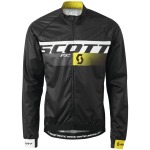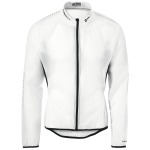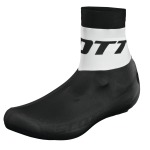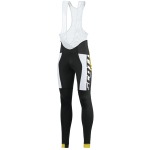A new year can be a daunting thing… the excitement and buzz of Christmas is over and suddenly 12-months lie ahead. Many of you may well have already planned early season targets or even objectives for the whole year. However, as I know only too well, for every person who has planned key targets, there will be another person who has planned nothing. So, before you do anything, take some time out and decide on your targets for the coming year. Please remember, these targets do not need to be racing targets. They could be FKT’s, personal projects or even an expedition. Once you have dates in a diary, you will find structuring your training so much easier. It provides perspective!
Did December go well for you?
December can be a tough month. It’s so easy to be distracted and miss training but don’t worry. If you maintained 3-4 sessions per week you are going to be in a great place to build your fitness in 2015.
It goes without saying that if you weren’t injured you will have been out running, be that on the trails or the treadmill. We hope that you managed to include a couple of cycling sessions? Ideally you will have done one easy session spinning the legs to help recovery from running and one ‘faster’ session either on the road or on an indoor trainer to help build stamina and strength
Niandi has been doing several indoor sessions as recovery and she wrote about them HERE
Me? Well you know what, the winter arrived in the UK, the ice came and so did the snow. For me it was perfect. I love running in the cold and snowy conditions. However, cycling outdoors was not an option. Thank goodness for the indoor trainer (Turbo Trainer) and I applied the session we outlined in Article 5 (Here) and I also cycled easy for 30 minutes with a high cadence for recovery.
Here is a summary of the session:
Warm up for 10-minutes ‘spinning’ your legs in an ‘easy’ gear. This is all about getting blood flowing, loosening stiff and/ or tight muscles and preparing for the session ahead.
Session: Perform 2 minutes at 80% of maximum heart rate (keeping cadence on or around 90) – You will need to use your cycling gears to add resistance and provide the necessary difficulty level for you elevate your heart rate. Monitor your HRM with a quality item – We use Suunto Ambit 3 Peak and Ambit 2 units
Recover for 2-minute ‘spinning’ your legs as in the warm up.
Repeat the 2-minute session with 2-minute recovery for an additional 5-times (making a total of 6 in week-1). *In week 2 do 7-repetitions, in week 3 do 8-repetitions and in week 4 do 10-repetitions.
I hit the reps building up the 2-minute intervals over a 4-week period and it felt great.
If you are anything like me, you will not want to loose those gains made over December and January so in February we are going to build with four sessions that you can do indoors or outdoors.
THE SESSIONS
If you don’t already know, training indoors on a bike is hard; I love it! You have no escape, no rest and your cadence, HRM, legs and sweat rate do not lie. Did I mention sweat! Boy do I sweat indoors. Even with a window open and a fan on me I am like a running tap with water pouring out of me. Make sure you keep yourself hydrated particularly during and after all sessions.
This month we have four sessions for you, one for each week and most of them include the same warm up and warm down. I call this: 5,4,3,2,1.
How does it work?
Your bike gearing will usually have two cogs at the front, for simplicity, we will call this the big ring and the small ring. Typically, a racing bike will have a 52/39 set up. The numbers refer to teeth on the cog. The ‘39’ makes gearing easier in comparison to the ’52.’
At the back you will have a selection of gears, if your bike is relatively new it will probably have 10-cogs.
The rear cogs start small (harder gear) and get larger (easier gear) and step up/ down progressively so that you can maintain an ‘ideal’ cadence (90) irrespective of the terrain. Your rear gearing may look like this:
12, 13, 14, 15, 16, 17, 19, 21, 23, 25
The above numbers refer to ‘teeth’ on the rear cogs.
 For example, 39×23 may be used on a steep climb when you need an easier gear or by comparison, if you are riding down a steep hill with the wind behind you, you may use 52×12.
For example, 39×23 may be used on a steep climb when you need an easier gear or by comparison, if you are riding down a steep hill with the wind behind you, you may use 52×12.
If you are not used to cycle gearing, the 5, 4, 3, 2, 1 will help you.
Depending on your experience, strength, fitness and experience. You may do this session on your small ring (easier) at the front of the bike or the big ring (harder.). I do my sessions on the ‘52’ cog. I am an ex cyclist with experience and bike strength and therefore adapted to pushing harder gears. Remember, you are using cycling to enhance running!
Start as follows:
- 52*x25 for 5 minutes aiming for 90+ cadence
- 52*x23 for 4 minutes aiming for 90+ cadence
- 52*x21 for 3 minutes aiming for 90+ cadence
- 52*x19 for 2 minutes aiming for 90 cadence
- 52*x17 for 1 minute aiming for 90 cadence
*Note, if you wanted this gearing to be easier you would replace the ’52’ (big ring) with say a ’39’ (small ring) for example.
By the time you reach the final minute you will be completely warm, your heart rate will have slowly elevated and the gearing will be ‘challenging’ but sustainable. Your heart rate will be in the 70-75% zone of max hear rate.
Now the sessions:
The sessions below can be done on the road or on an indoor trainer. It goes without saying that for such specific sessions, an indoor trainer would be preferable as you can control the whole session. If you do try the sessions outside, you will need a good long stretch of flat road. Undulating roads would make this session impossible.
Hints ‘n’ Tips
- Use a heart rate monitor. It’s great to get the feedback. I have included my hear rate profiles recorded via my Suunto for the sessions below.
- Have water handy – you will need it.
- If training indoors use a fan or train near an open window.
- Keep your pedalling technique smooth, don’t fight the bike.
Week 1: 40-minute session
5, 4, 3, 2, 1 warm up
*Move up 1 additional gear, for me this would be 52×16 and maintain a 90 cadence for 5 minutes. You can expect your heart rate to rise as you maintain the effort.
Drop back down to 5, 4, 3, 2, and 1 and repeat the warm up – this loosens the legs and adds souplesse.
Repeat the above set* but in the final minute push really hard to maximal effort. At the end of the final minute you will have a good idea of your maximum hear rate (MHR).
Cool down with 5, 4, 3, 2, and 1 but in reverse finishing with just 1 minute in the easiest gear. This works as a great cool down.
Week 2: 1-hour session
5, 4, 3, 2, 1 warm up
*Stay in the final gear you used for the 1-minute in the warm up and maintain a 90+ cadence for 30 minutes building your effort throughout the session.
Cool down with 5, 4, 3, 2, and 1 but in reverse finishing with just 1 minute in the easiest gear. This works as a great cool down.
Week 3: 40-minute session
4, 3, 2, 1 warm up (we miss the 5-min section this time)
Move up 1 additional gear, for me this would be 52×16 and maintain a 90 cadence for 4-minutes and then step up 1-gear (for me this is 52×15) and work hard for 1-minute. At the end of 1-minute drop back down one gear, for me 52×16 and repeat 4min/ 1min for four more times (total five repetitions)
Cool down with 5-minutes spinning in your start gear, for me, this would be 52×25
Week 4: 1-hour session
5, 4, 3, 2, 1 warm up
Move up 1 additional gear, for me this would be 52×16 and maintain a 90 cadence for 4-minutes and then step up 1-gear (for me this is 52×15) and work hard for 1-minute. At the end of 1-minute drop back down one gear, for me 52×16 and repeat 4min/ 1min for five more times (total six repetitions)
Cool down with 5, 4, 3, 2, and 1 but in reverse finishing with just 1 minute in the easiest gear. This works as a great cool down.
NOTE: The above cycling sessions would replace a faster run session in each week and I would still recommend one or even maybe two other cycle sessions per week for recovery. On the recovery sessions just use an easy gear and ‘spin’ with 90+ cadence. Make sure you drink if training indoors, it gets really hot!
Join us on STRAVA
Thanks to SCOTT SPORTS and SUUNTO for the support and backing
Check out SCOTT HERE
Check out SUUNTO HERE















![Suunto_logo [ConveWHITE_rted]](https://iancorless.org/wp-content/uploads/2014/10/suunto_logo.jpg?w=150&h=90)







